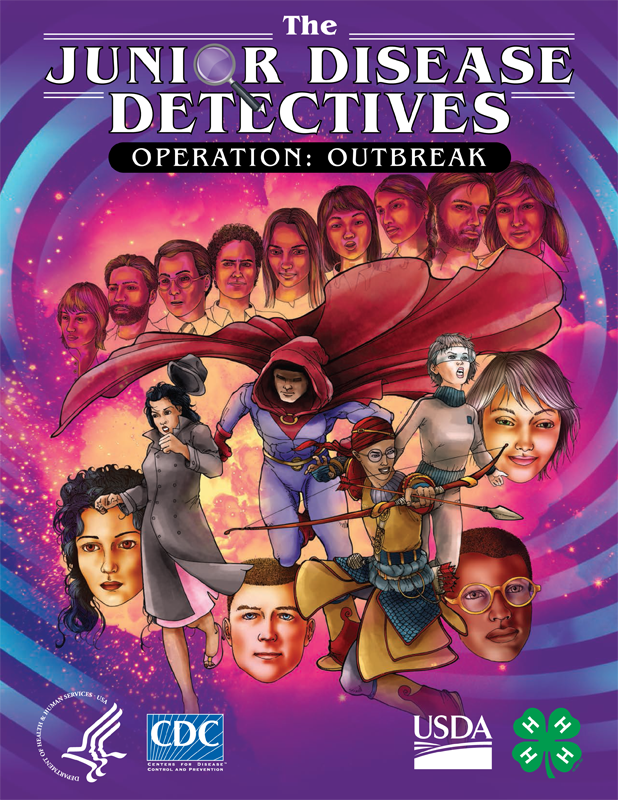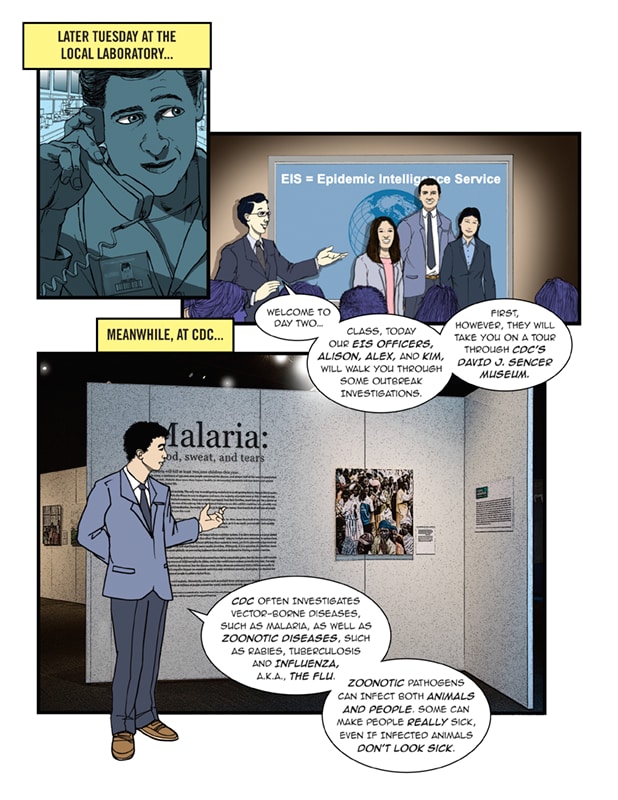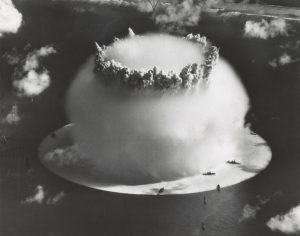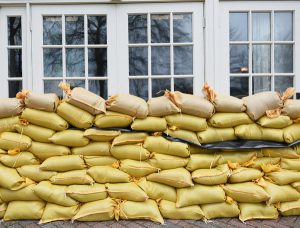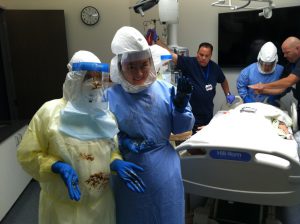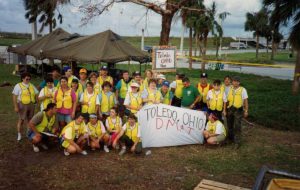Archive for the ‘Documents’ Category
GAO: Initial Observations on the Federal Response and Key Recovery Challenges to the Hurricanes and Wildfires of 2017
Wednesday, September 12th, 20182017 Hurricanes and Wildfires:
Initial Observations on the Federal Response and Key Recovery Challenges
GAO-18-472: Published: Sep 4, 2018. Publicly Released: Sep 4, 2018.
Federal and state preparedness and coordination efforts prior to and after the 2017 hurricane and wildfire disasters facilitated the response in Texas, Florida, and California. Specifically, the Federal Emergency Management Agency (FEMA) and state emergency management officials implemented various preparedness actions prior to landfall of the hurricanes and during the wildfires—such as predeploying federal personnel to support response efforts; colocating federal, state, and local emergency managers; and pre-staging and delivery of commodities like food and water. Further, according to FEMA and state officials, preexisting coordination mechanisms and relationships also facilitated response efforts in each state. For example, FEMA and each state had conducted numerous emergency exercises in the years prior to these disasters and had developed relationships during response to prior disasters that led to accelerated decision-making during the 2017 disasters. Federal and state officials emphasized that there were certainly unprecedented challenges during these disasters—such as deploying a sufficient and adequately-trained FEMA disaster workforce—and lessons learned, but prior response coordination efforts helped to quickly and effectively resolve many of these challenges.
The federal government provided significant support to Puerto Rico and the U.S. Virgin Islands in response to Hurricanes Irma and Maria, but faced numerous challenges that complicated response efforts. FEMA efforts in Puerto Rico alone were the largest and longest single response in the agency’s history. As of April 2018, FEMA had obligated over $12 billion for response and recovery for Hurricane Maria (see figure below) reflecting the scale and complexity of efforts given the widespread damage. FEMA tasked federal agencies with over 1,000 response mission assignments for Hurricanes Maria and Irma in the territories at a cost of over $5 billion, compared to about 400 such assignments for Hurricanes Harvey and Irma and the California wildfires combined. For example, FEMA assigned the U.S. Army Corps of Engineers the mission to install over 1,700 emergency electricity generators in Puerto Rico, compared to the 310 for the response to Hurricane Katrina.
Federal Emergency Management Agency Disaster Relief Fund Obligations and Expenditures for Hurricanes Harvey, Irma, Maria, and California Wildfires through April 30, 2018

Note: An obligation is a definite commitment that creates a legal liability of the government for the payment of goods and services ordered or received. An expenditure is an amount paid by federal agencies by cash or cash equivalent, during the fiscal year to liquidate government obligations.
Nevertheless, GAO found that FEMA faced a number of challenges that slowed and complicated its response efforts to Hurricane Maria, particularly in Puerto Rico. Many of these challenges were also highlighted in FEMA’s own 2017 hurricane after action report, including:
- the sequential and overlapping timing of the three hurricanes—with Maria being the last of the three—caused staffing shortages and required FEMA to shift staff to the territories that were already deployed to other disasters;
- logistical challenges complicated efforts to deploy federal resources and personnel quickly given the remote distance of both territories; and
- limited preparedness by the U.S. Virgin Islands and Puerto Rico for a Category 5 hurricane and incapacitation of local response functions due to widespread devastation and loss of power and communications led FEMA to assume response functions that territories would usually perform themselves.
The 2017 hurricanes and wildfires highlighted some longstanding issues and revealed other emerging response and recovery challenges. For example, the concurrent timing and scale of the disaster damages nationwide caused shortages in available debris removal contractors and delays in removing disaster debris—a key first step in recovery. In addition, FEMA’s available workforce was overwhelmed by the response needs. For example, at the height of FEMA workforce deployments in October 2017, 54 percent of staff were serving in a capacity in which they did not hold the title of “Qualified”—according to FEMA’s qualification system standards—a past challenge GAO has identified. FEMA officials noted that staff shortages, and lack of trained personnel with program expertise led to complications in its response efforts, particularly after Hurricane Maria.
Federal Disaster Workforce Deployed at the Height of 2017 Response Acivities
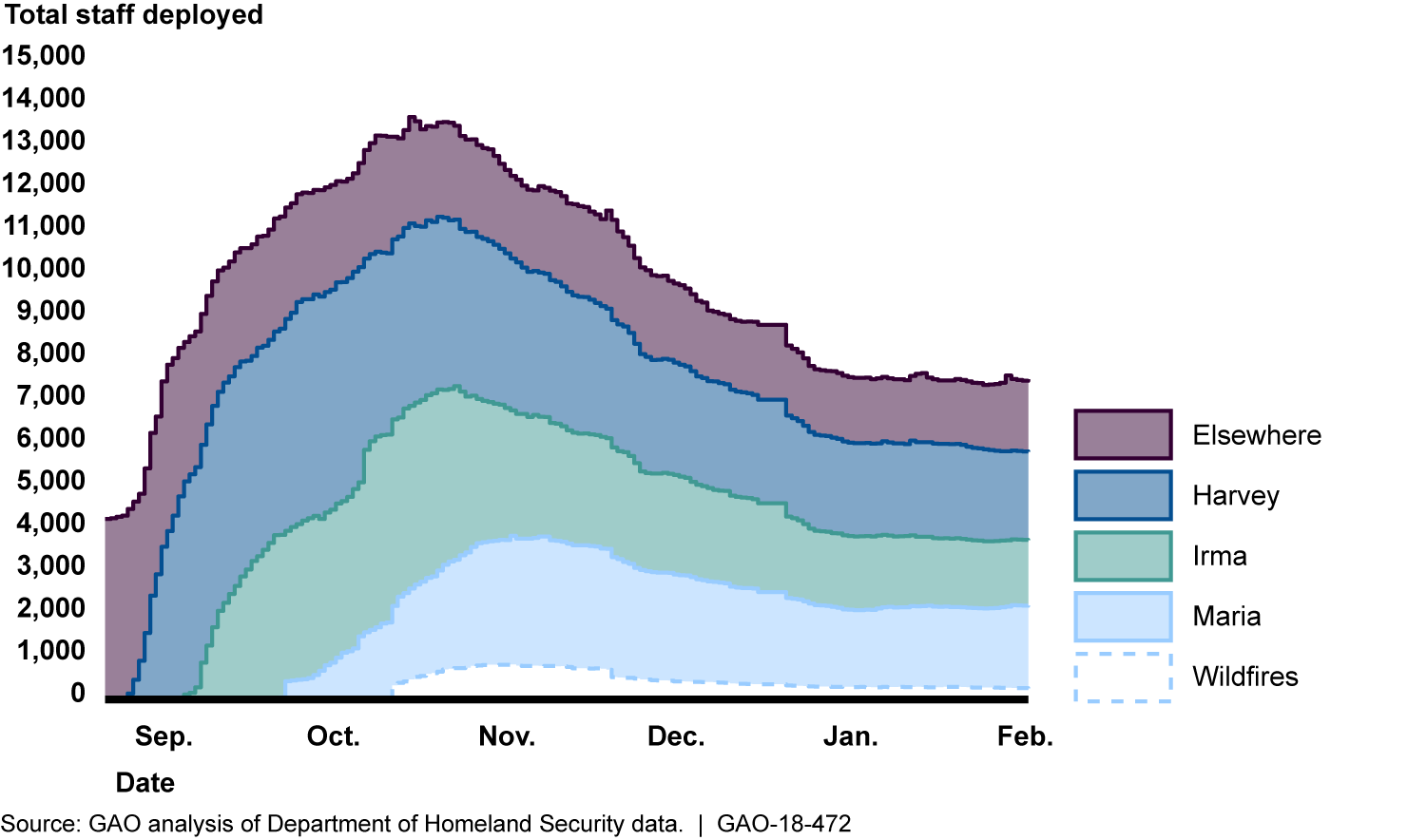
Further, federal, state, and local officials faced challenges finding temporary housing for disaster survivors given the extensive damage to available housing in each location. For example, given the widespread damage in Puerto Rico and lack of hotels and other temporary housing, FEMA transported survivors to the mainland United States to stay in hotels. FEMA also used new authorities and procedures to meet the need, such as providing Texas as much as $1 billion to manage its own housing program. However, this approach had not been used or tested in past disasters and state officials noted challenges in managing the program such as staffing shortfalls. State officials further noted challenges in coordinating with FEMA that led to delays in providing assistance to survivors. GAO will continue to monitor these programs.
Why GAO Did This Study
In 2017, four sequential disasters—hurricanes Harvey, Irma, Maria, and the California wildfires—created an unprecedented demand for federal disaster response and recovery resources. According to FEMA, 2017 included three of the top five costliest hurricanes on record.
The National Oceanic and Atmospheric Administration estimated that the cumulative damages from weather and climate related disasters in the United States were over $300 billion in 2017 alone. As of June 2018, Congress had appropriated over $120 billion in supplemental funding for response and recovery related to the 2017 hurricanes and wildfires. Further, in October 2017, close to 14,000 federal employees were deployed in response to the disasters.
Given the scale and cost of these disasters, Congress and others have raised questions about the federal response and various recovery challenges that have arisen since the disasters. This report provides GAO’s observations on: (1) federal and state preparedness and response coordination for hurricanes Harvey and Irma in Texas and Florida, and the California wildfires; (2) federal preparedness for and response to hurricanes Irma and Maria in Puerto Rico and the U.S. Virgin Islands; and (3) existing and emerging disaster recovery challenges highlighted by these disasters.
GAO analyzed FEMA policies, procedures, guidance, and data specific to disaster response and recovery programs. GAO focused on the busiest period of disaster response activity for the federal government—August 2017 through January 2018, with select updates on recovery efforts and obtained updates through June 2018. In October and November 2017, GAO teams made site visits to hurricane damaged areas in Texas, Florida, Puerto Rico, and the U.S. Virgin Islands. At these locations, GAO visited FEMA joint field operation locations and interviewed FEMA, Department of Defense, and other federal officials about response and recovery operations, visited disaster recovery centers, and observed damage. GAO also interviewed FEMA officials responsible for wildfire response and recovery efforts in California.
Additionally, GAO interviewed state and territorial emergency management officials or their designee in Texas, Florida, California, Puerto Rico, and the U.S. Virgin Islands, as well as officials from eight cities and counties in Texas, Florida, and California (selected based on their proximity to the disaster impacted areas and their availability) to discuss their observations on the federal response in their respective jurisdictions. While the perspectives of these officials are not generalizable, they provided valuable insights into the federal response to the 2017 disasters.
This report includes 10 appendices that provide further details and data on federal response and recovery efforts. These areas cover key issues and challenges that GAO believes are critical for assessing the federal response and warrant continued Congressional and agency oversight during disaster recovery.
GAO is not making recommendations in this report, but has ongoing work that will address various response and recovery programs and challenges in more detail. GAO will make recommendations, as appropriate, once this work is completed.
In commenting on a draft of this report, DHS stated that the report highlighted the challenges of the complicated response and recovery efforts as well as provided insights into these efforts. DHS also noted that it is continuing to apply lessons learned from 2017 to improve its future program delivery and response efforts.
For more information, contact Christopher Currie at (404) 679-1875 or curriec@gao.gov.
Texas made strides in the aftermath of Hurricane Harvey but a year later there is still a disturbing lack of recovery based on income and race across a state
Wednesday, September 5th, 2018Episcopal Health Foundation report
“…..Nearly a year after Hurricane Harvey swamped the Texas Gulf Coast, a growing share of affected residents say their lives are back on track, but three in 10 (30%) say their lives remain disrupted….”
One Year Later: Document/Survey
“……27 percent of Hispanic Texans whose homes were badly damaged reported that those homes remained unsafe to live in, compared to 20 percent of blacks and 11 percent of whites. There were similar disparities with income: 50 percent of lower-income respondents said they weren’t getting the help they needed, compared to 32 percent of those with higher incomes….”
8/31/1886: Near Charleston, South Carolina, an earthquake, felt as far away as Boston and Cuba, leaves more than 100 people dead and hundreds of buildings destroyed.
Friday, August 31st, 2018Puerto Rico: US now estimates that 2,975 people died as a result of the Hurricane Maria and its effects
Wednesday, August 29th, 2018United Nations: Report of the Independent International Fact-Finding Mission on Myanmar
Tuesday, August 28th, 2018Document: Report of the Independent International Fact-Finding Mission on Myanmar
Contents Page I. Introduction ……………………………………………………………………………………………….
3 II. Mandate and methodology …………………………………………………………………………..
3 A. Mandate …………………………………………………………………………………………….
3 B. Methodology ………………………………………………………………………………………
3 C. Legal framework …………………………………………………………………………………
4 III. Context….. ………………………………………………………………………………………………..
4 IV. Emblematic situations …………………………………………………………………………………
5 A. Rakhine State ……………………………………………………………………………………..
5 B. Kachin and Shan States………………………………………………………………………..
11 C. Fundamental freedoms …………………………………………………………………………
14 V. Hallmarks of Tatmadaw operations ………………………………………………………………
14 A. Targeting civilians ………………………………………………………………………………
15 B. Sexual violence …………………………………………………………………………………..
15 C. Exclusionary rhetoric …………………………………………………………………………..
15 D. Impunity…………………………………………………………………………………………….
15 VI. Crimes under international law …………………………………………………………………….
16 A. Genocide ……………………………………………………………………………………………
16 B. Crimes against humanity ……………………………………………………………………..
16 C. War crimes …………………………………………………………………………………………
17 VII. Responsibility …………………………………………………………………………………………….
17 VIII. Accountability ……………………………………………………………………………………………
18 IX. Main conclusions and recommendations ………………………………………………………..
19
The Junior Disease Detectives: Operation Outbreak Graphic Novel
Tuesday, August 14th, 2018The Junior Disease Detectives: Operation Outbreak Graphic Novel
Download the Graphic Novel
CDC has partnered with the U.S. Department of Agriculture (USDA) and 4-H to develop “The Junior Disease Detectives: Operation Outbreak,” a graphic novel intended to educate youth audiences about variant flu and the real disease detective work conducted by public and animal health experts when outbreaks of infectious diseases occur.
This graphic novel follows a group of teenage 4-H members who participate in a state agricultural fair and later attend CDC’s Disease Detective Camp in Atlanta. When one of the boys becomes sick following the fair, the rest of the group use their newly-acquired disease detective knowledge to help a team of public and animal health experts solve the mystery of how their friend became ill.
Educational Activities for the Classroom
CDC has partnered with teachers participating in its Science Ambassador Fellowship to develop educational activities to accompany the graphic novel for use in middle and high school science, technology, engineering and mathematics (STEM) classrooms. The activities highlight themes in the graphic novel to teach youth about public health science, epidemiology, biology, outbreak investigations and associated career skills. The graphic novel and its associated educational activities are part of a broader CDC initiative with USDA and other agricultural partners to raise awareness, knowledge and understanding of a One Health approach to zoonotic disease prevention and response. The activities below are available for free download and use, and additional classroom activities will be developed and posted to this site throughout the 2018-2019 school year.
- Educational Overview (COMING SOON): This document describes the learning objectives associated with the graphic novel and also topics related to influenza (flu) epidemiology, flu biology, zoonotic diseases, variant flu, novel flu and pandemic flu.
- Activity 1 – The Operation Outbreak Team (COMING SOON): In this activity, students learn the various roles and responsibilities of the professionals involved in an outbreak response.
- Additional classroom activities will be in the summer and fall of 2018
Global warming & extreme weather disasters
Wednesday, August 1st, 2018Climate as Culprit : Document (NATURE | VOL 560 | 2 AUGUST 2018)
“……scientists had completed “attribution” studies on 190 extreme weather events between 2004 and the middle of 2018. In about two thirds of those cases, the researchers concluded the events had been made more likely, or more severe, because of humanity’s role in warming the Earth.
Last year, for the first time, studies suggested that three weather anomalies — a string of Asian heatwaves, record temperatures around much of the world and ocean warming in the Gulf of Alaska and Bering Sea — wouldn’t have happened were it not for climate change…….”
Nuffield Bioethics: BACKGROUND PAPER on PANDEMICS
Wednesday, July 18th, 2018Nuffield Bioethics Document on Pandemic Ethical Considerations
Forward Look 19-20 May 2011
Pandemics
Background Paper
Giovanni De Grandis, University College London Jasper Littmann, University College London / Health Protection Agency
“This paper highlights the main ethical problems raised by strategies aiming at pandemic prevention and control. It outlines what issues nations, policy makers, health care professionals and the public are faced with both during a pandemic and in the attempt to stave it off.”
Attacks on Medical Education across the Globe
Tuesday, July 10th, 2018Attacks on Medical Education : Document
“…..The aim of this report is to explore an impact of violence on medical education, with its specific components, such as education facilities, teaching hospitals, libraries, professors, medical students and all other directly related components…..”
“….Venezuealan Case Studies:
Threats / intimidation of medical personnel of the Central Hospital of San Cristóbal during protests: During the month of April and May several threats were reported against the personnel of the Central Hospital of San Cristóbal, Táchira state, because the National Guards forbade treating the wounded during social protests, intimidating some doctors who attended these wounded youth, despite the multiple protests that took place in the hospital, this intimidation did not stop.
Tear gas pumps near the Del Valle maternal and child hospital on 04/20/2017: The use of tear gas bombs by the Bolivarian National Police and the Bolivarian National Guard in Longaray and the Intercomunal Avenue of El Valle affected the patients of El Valle Children’s Maternity Hospital. Gases seeped into hospital facilities affecting workers, mothers and newborns17.
Detention of the professor of medical school of the Universidad Central de Venezuela, MD Óscar Noya, on 04/20/2017: Oscar Noya is a doctor and professor at the Central University of Venezuela (UCV). He works continuously for the population that lives in the upper Orinoco. Through the Twitter social network it was possible to know that in the afternoon of Thursday, April 20, Dr. Oscar Noya was arrested, when participated in the protest. Moya was helping people affected by tear gas in Santa Monica, Caracas…..”
Johns Hopkins University Bloomberg School of Public Health’s Center for Health Security states that although the healthcare system is better prepared post-9/11, it’s still not par in terms of handling a catastrophic disaster
Tuesday, July 3rd, 2018“A new report found that U.S. hospitals would struggle to respond adequately to large-scale catastrophic events such as disasters and attacks……Researchers also called for creating a network of disaster resource hospitals as complex disasters “require expertise and resources that are not found in most hospitals,” yet major medical centers with the resources may “lack a dedicated focus on disaster preparedness and response.”……..”



